Fall maintenance for your home and yard is crucial to ensure that your property is well-prepared for the winter months. By taking the time to perform fall maintenance tasks, you can prevent potential issues and costly repairs down the line.
In this checklist, we’ll cover various tasks you should take care of before the colder months arrive… you’ll stay more comfortable and will greatly reduce the chances of issues throughout the winter and into the spring.
Interior Home Maintenance
Replace the Batteries in Your Carbon Monoxide Detectors & Smoke Alarms

As the leaves start to fall, it's the perfect time to give your smoke and carbon monoxide detectors a little attention. With your heating systems working overtime and windows staying shut when the colder air rolls in, it's crucial to ensure these safety devices are in top shape.
Take a moment to test your detectors and replace any batteries that are running low. Remember, smoke detectors have a lifespan of about 10 years, while carbon monoxide detectors tend to last around six years—so if your detectors are aging, now is a good time to replace them.
Have Your Furnace Serviced & Change the Filter
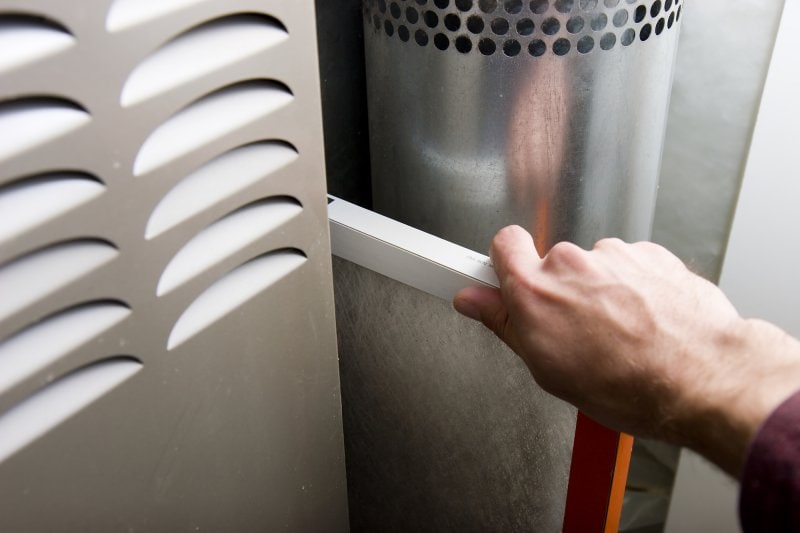
As the chill of fall sets in, it's the ideal time to show your furnace some love. An annual inspection and cleaning can boost your heating system's safety and efficiency. Regular upkeep might also save you from the inconvenience of a breakdown during the frosty winter months when you need it the most. Be sure to book an appointment with a heating and cooling expert to finetune your system for peace of mind as winter draws near.
Don't forget about your furnace filter, either! It's a simple task, but one that's easy to forget. Regularly changing your furnace filter is a key step in maintaining a healthy furnace. If it's been a while since you last changed it, ensure you install a fresh one before you fire up your furnace for the first time this season.
Remember, a well-maintained furnace is not just about warmth, it's about the safety and comfort of your home.
Clean Your Fireplace
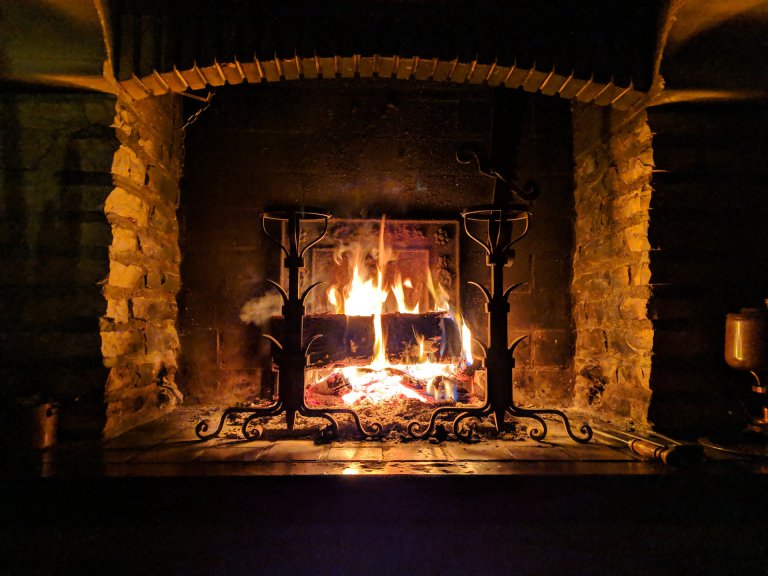
Before you start planning cozy fireside evenings, ensure your fireplace is ready and safe. Grab a flashlight and do a quick check-up of your fireplace flue and chimney. Ensure the damper is functioning correctly—it should open and close with ease. Take a peek up into the flue to check for any unwanted debris such as branches, leaves, or bird nests. If all is clear, you should be able to see daylight at the top of the chimney.
A blocked chimney can lead to a dangerous chimney fire, often ignited by burning creosote and buildup. To avoid potential disaster, it's best to call in a professional chimney sweep to give your fireplace and chimney a thorough inspection and cleaning. A professional can also inspect the gas lines for leaks and make necessary repairs.
Eliminate Air Leaks from Doors & Windows
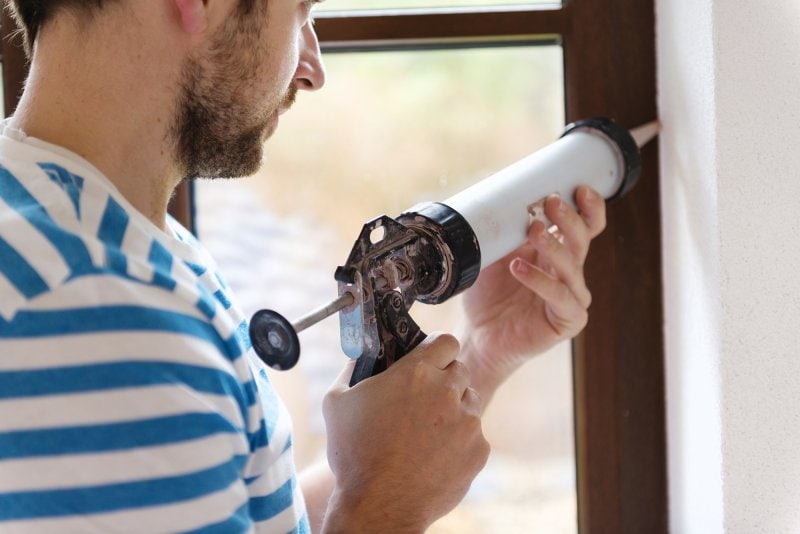
Did you know that nearly half of your home's energy costs are due to heating and cooling? By properly sealing and insulating, you can save up to 20% on these costs. So, fall is the perfect time to take care of any leaky windows and doors to keep the winter chill out and the cozy warmth in.
Identifying air leaks is simple. Just move your hand around the frame to feel for air, or light a candle and slowly move it around the window casing. If you see the flame flicker, or if the flame and smoke are pulled in a certain direction, you've found a leak.
Applying caulk and weatherstripping inside your windows can help, but don't forget to check the exterior side too. Polyurethane caulk is great for external use, while silicon caulk works well for the interior. If you don’t already have them, consider installing door sweeps to prevent drafts from seeping in at the bottom of your doors.
While you may not consider it “inside” your home, be sure to check the seal between your garage door and the ground. It should be tight to keep drafts out and prevent small unwanted critters from sneaking in.
Exterior Home Maintenance
Clean Your Gutters
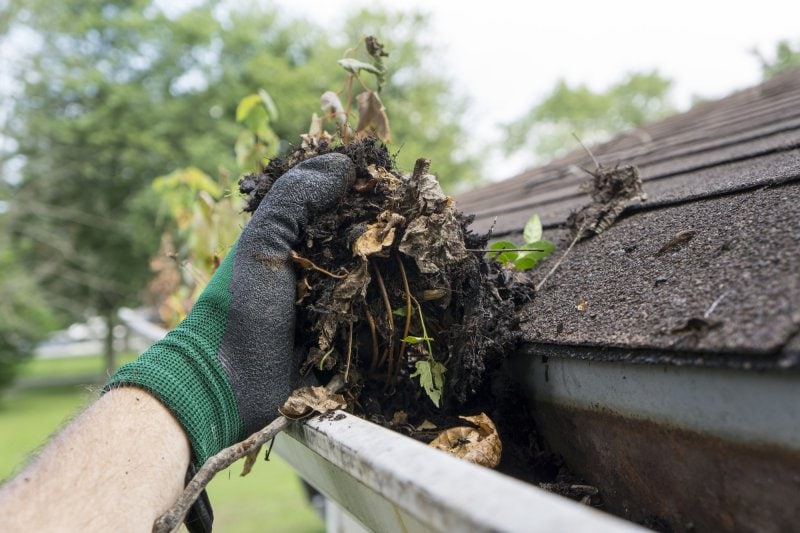
While you should clean your gutters regularly, it’s especially important to do so near the end of fall. Clear out any leaves, twigs, and other muck that may have accumulated over time.
This not only allows water to flow freely away from your home, preventing potential water damage, but also prevents your gutters from trapping water and becoming heavy—which can cause them to damage your home’s siding. Clogged gutters can create ice dams during winter and become a cozy home for insects and pests.
Here's a pro tip: An old plastic spatula makes a great tool for cleaning debris from gutters! It won't scratch your gutters, and you can easily cut it to fit gutter contours. Plus, it's easy to clean afterward. Inspect your gutters for any sagging or damage and tighten any loose hangers or downspout brackets.
Ensure your downspouts extend at least five feet from your house to prevent foundation issues. If they don't, consider adding downspout extensions, which are usually around $10 or so.
If you notice your gutters are cracking or rusted, it may be time to replace them to ensure they function properly throughout the winter and beyond. If you aren’t sure if your gutters need replacing, if you aren’t comfortable with getting up on a ladder to clean them, or if you’d just prefer to avoid the hassle, you can call a local company to take care of everything for you… it’s a relatively inexpensive service that can be well worth the investment.
As a sidenote: if you spot grit from your asphalt roof shingles in your gutters, it can be a warning sign that all is not well with your roof. This grit protects shingles from harmful UV rays, and its presence could indicate roof damage—so be sure to request a roof inspection in this case.
Inspect & Repair Your Roof

Your roof is your home's primary defense. If it has been compromised due to aging or storms, you risk water damage that can cause issues with your insulation, wood, and drywall—it can even impact your electrical, plumbing, and HVAC systems. It's far better to tackle repairs in the fall than to discover a leaky roof in the middle of a snowstorm.
It's a smart move to regularly check your roof, or even better, get a professional to do an annual routine inspection. Fall is the perfect time for a routine inspection that could reveal potential issues like damaged or missing shingles, loose seams, or shingle debris in your downspouts. Addressing these problems before winter arrives can help prevent leaks and further damage.
Extreme weather conditions like hailstorms or strong winds can also affect your roof's condition, so it's worth getting an inspection after such events. If you’re not interested in having an annual inspection done, you should be able to safely inspect it from the ground using binoculars. Keep an eye out for cracked, warped, or missing shingles, and watch for flashing with rust spots. Any loose, damaged, or missing shingles should be replaced.
Look for growths on your roof as well. While black algae stains are generally harmless (though they can be unappealing to the eye), clusters of moss or lichen might indicate underlying roof decay. If you notice growth or are unsure, consult a reputable local roofing company to take a look.
Check for Cracks & Damage in Your Foundation & Driveway
Take a good look at your home's foundation for any signs of cracks. Be sure to use caulk to seal any gaps where your home's masonry meets the siding and where pipes or wires enter your home. Caulking and sealing these areas is a fast and cost-effective way to protect your home and save money on potentially expensive repairs down the road.
Even in areas with a generally warmer climate, winter can be harsh and cause water or ice damage. If left unattended, these gaps can let water seep in and freeze, leading to cracks and potential mold issues, so it’s well worth the small effort to perform these minor repairs. While you’re at it, don't forget your driveway! Keep it in top shape by cleaning and repairing any damaged areas and cracks with driveway filler, followed by a coat of commercial sealer. This will help protect it from the harsh winter conditions and help ensure the existing damage doesn’t worsen.
Yard Maintenance
Fall is an essential time when it comes to yard care. With proper care, preparation, and treatment, you can prime your yard to come back healthy and strong after a harsh winter.
Fertilize Your Yard
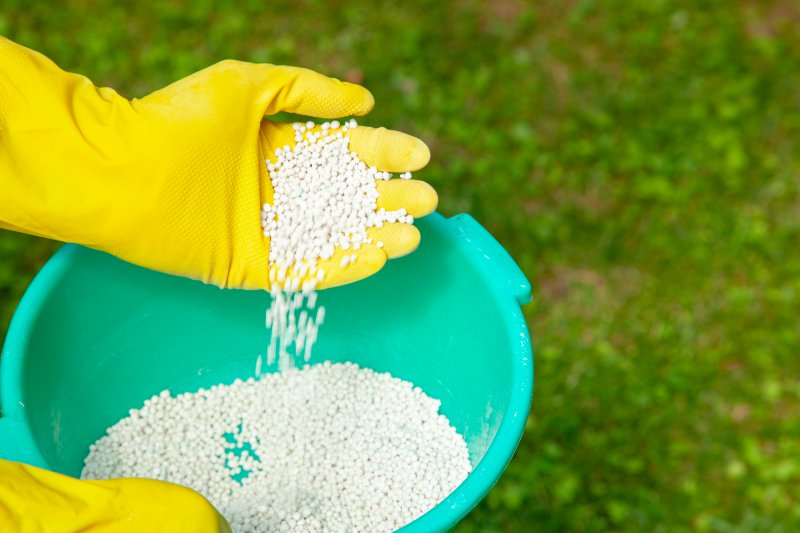
Though your grass may not be growing as fast, the roots are still active, so fertilizing in the fall can stimulate root growth and prevent winter damage. The nutrients and energy provided by the fertilizer support root growth in the cooler weather before the grass goes dormant, which helps your grass store more nutrients to set the stage for a lush, healthy lawn come spring. For the best results, apply the fertilizer around three weeks before your final mow of the season.
Water Your Yard
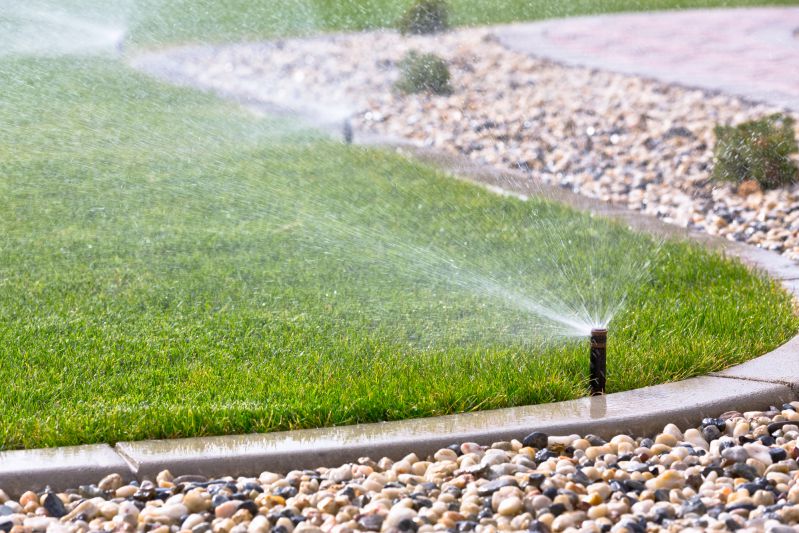
Even as the weather cools and grass growth slows down, your lawn still needs hydration. Watering in fall helps your lawn recuperate from the intense summer months and fortify itself for the freezing months ahead. If you're fertilizing, watering is essential for the fertilizer to dissolve and penetrate the ground to properly nourish the roots of your grass. So, keep those hoses and sprinklers handy until shortly before the first freeze of the year. Your lawn will thank you!
Rake or Mulch Leaves
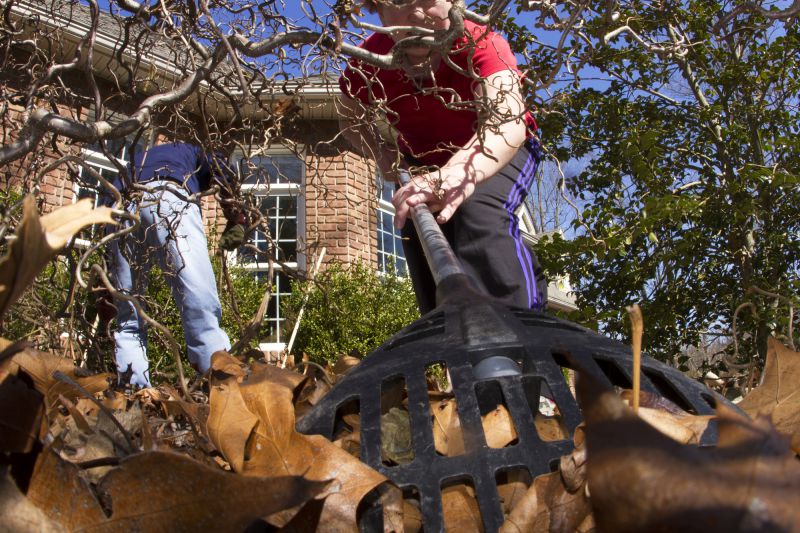
If you have a mower with a mulching mode, using it can help clean up your yard while enriching your grass with extra nutrients. If you don’t have a mulcher, it’s important to keep leaves raked to keep them from suffocating the grass.
Tend to Your Trees & Shrubs

Don't forget your trees and shrubs! They may need extra care to survive the winter, especially deciduous trees such as oaks, maples, and beeches. Thoroughly water them from the trunk to the tip of the longest branch. For thin-barked trees, consider using a tree wrap to shield them from freezing temperatures as winter draws near.
Take Care of Your Garden Hoses & Outdoor Faucets

If you ask most homeowners who have experience with preparing for the winter, most will tell you to disconnect your garden hoses from the faucets outside your home.
This is sound advice—if left connected, water can accumulate in the faucets and the pipes within your exterior walls. When temperatures reach freezing levels, this water can turn to ice, expand, and potentially damage the faucet or pipes.
They’ll also tell you to turn off any shutoff valves on water supply lines leading to exterior faucets and to drain your garden hoses to store them inside your shed or garage
However, if you have plants that need watering in the winter (while plants don’t require as much water in their dormant period, it’s recommended to water them a couple times a month), or if you need to supply outdoor pets and animals with water, turning on and off your water supply valves, hauling hoses in and out of your shed, and draining your hoses after use can be tedious and time consuming.
Instead, you can install a Freeze Miser on each of your hoses and outdoor faucets to protect them from the freezing temperatures without the hassle of draining hoses and shutting off water to these exterior faucets. It's a simple, cost-effective solution that can save you a lot of trouble in the long run.

The cost of the Freeze Miser is under $30.00, making it a simple and affordable solution that can prevent potentially thousands of dollars in damages. It automatically starts dripping water as temperatures drop close to freezing. Once the temperature increases, it automatically stops. This helps protect your pipes while using as little water as necessary.
Winterize Your Sprinkler System
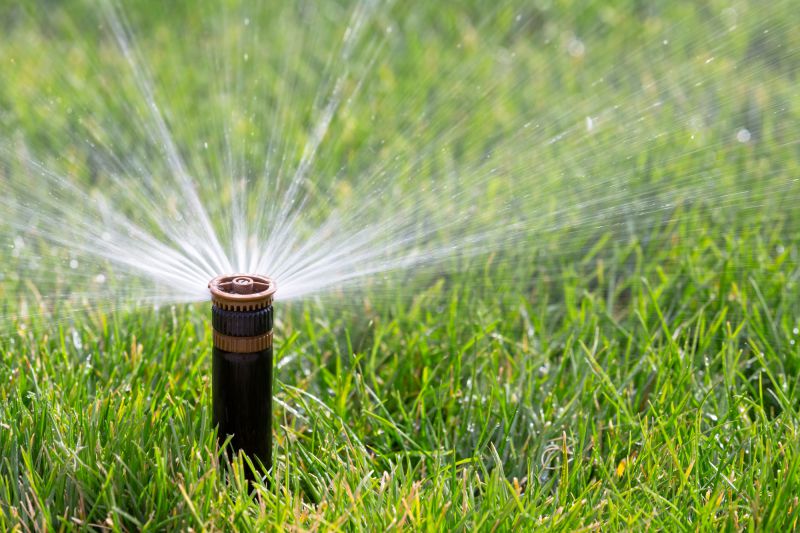
If you have an irrigation system, you already know how much time and effort it saves when it comes to keeping your lawn looking great. In order to protect your investment and ensure it keeps your yard looking good for years to come, it’s important to take proper care of it as winter approaches.
Even the buried irrigation lines are not immune to freezing, which can result in damaged pipes and broken sprinkler heads—so it’s important to ensure your irrigation system is cleared of water before the temperatures approach freezing levels.
If your system has drain valves, start by turning off the water supply to the system at the main valve and then deactivate the automatic controller. Following this, open the drain valves to expel any water from the system.
Next, remove any sprinkler heads that are above ground, give them a good shake to get rid of any water inside, then replace them.
If your system doesn't have drain valves, it’s a good idea to call in a professional to clear out the system pipes using compressed air. While you can do this yourself with a compressor, it can be a bit tricky. If you decide to go the DIY route, make sure to check your manufacturer’s guide for instructions on how to properly clear your lines.
Take Care of Your Lawn Equipment
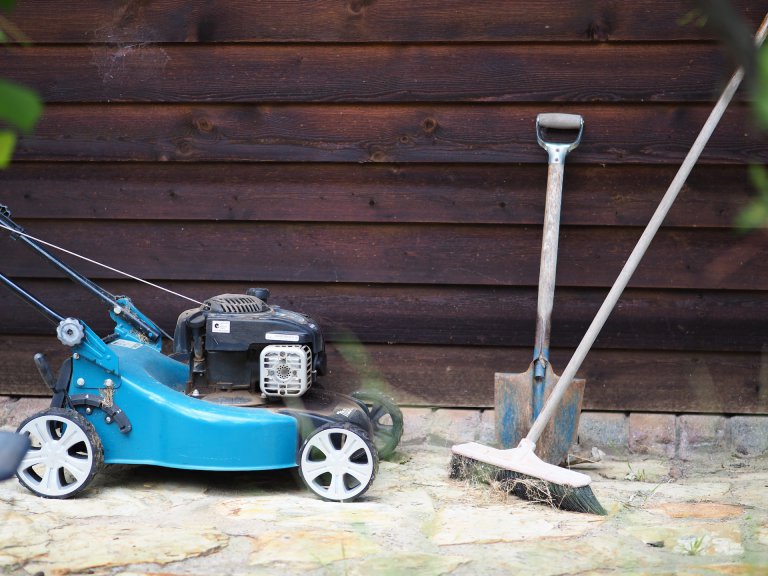
After you’ve finished taking care of your yard as fall draws to a close, set some time aside to properly care for your lawn equipment before tucking it away for the winter.
Empty any leftover fuel from your lawn mower and remove the spark plugs before you store it. This also applies to all your gas-powered equipment such as leaf blowers and chain saws. In addition, be sure to give your shovels, rakes, and other hand tools a good rinse and brush off any clinging dirt.
This is also a good time to test any snow equipment you may have, such as a snow blower. Imagine being stuck indoors because your snow blower isn't working and you can't get your car out to buy a new one without resorting to manual snow shoveling. Checking that your snow removal tools are functioning properly can help prevent any unwanted surprises after the first snowfall of the season.
Deck & Porch Maintenance
In addition to tending to the inside and outside of your home and your yard, it’s also worth putting a little time into preparing your porch or deck for the upcoming winter.
Clean & Store Your Deck & Porch Furniture

Sure, your patio furniture is designed for the outdoors, but that doesn't mean it will hold up well through freezing temperatures, ice storms, and heavy snowfalls.
You've invested time and money into acquiring comfortable furniture to create a nice outdoor space to relax and enjoy nicer weather, so to ensure it lasts for many more spring and summer seasons, it's best to clean it off and store it in your garage or shed.
If you lack storage space, a waterproof furniture cover can be a great alternative. A little effort now to protect your outdoor furniture can save you a lot of trouble (and money) in the future.
Check the Integrity of Your Deck or Porch

Checking the condition of your deck or porch is crucial when it comes to ensuring the safety of yourself, your family, and your guests. There are several areas to check for your deck or porch, so let’s take a look at the key things to look at.
First, let's talk about railings. They're not just there for looks - they provide crucial support, especially when surfaces become slippery due to ice. So, take the time to give them a good shake and ensure they're sturdy. If they wobble or show signs of weakness, it's time to reinforce or replace them. This simple check could prevent accidents and injuries when winter weather hits.
Next, be sure to take a look at your stairs. Just like the railings, they need to be strong and secure. Harsh weather can cause wear and tear that weakens your stairs over time. Check for any signs of damage, such as cracks, loose boards, or rot. If you find any issues, it's best to address them immediately. Not only can weakened stairs be a safety hazard, but they can also lead to more significant damage if left unattended.
While you're at it, consider applying a non-slip paint or adhesive strips to your stairs. This can provide extra traction and help prevent slips and falls when the stairs are wet or icy.
Don't forget to check the overall structure of your deck or porch. Look for any signs of damage or wear in the flooring and support beams. If you notice any sagging, cracks, or other signs of stress, it might be time to call in a professional to assess the situation.
Your deck or porch is an extension of your home. By taking the time to ensure its integrity, you're not only ensuring the safety of your loved ones but also prolonging the life of your outdoor space.
Fall Pool Maintenance & Winterizing

Taking care of your pool in the fall to protect it during the winter can help keep it in the best possible condition during the off-season. This way, when the warmer weather rolls around, you'll be ready to dive right back in with minimal fuss and effort.
Cover Your Pool
Covering your pool for the winter is an important step to protecting it. A well-fitted pool cover protects your pool from debris, reduces evaporation, and helps maintain the water’s chemical balance. It also prevents unwanted access, ensuring safety during the off-season. But it’s not just about covering your pool; it’s about using a cover in good condition.
Inspect & Replace Your Pool Cover if Necessary
As you’re pulling out your pool cover for the winter, inspect it for any signs of damage. Look out for tears, holes, or frayed edges that could compromise its effectiveness. If your pool cover is damaged, it may not provide the protection your pool needs throughout the winter. It's also important to ensure that the cover fits securely and doesn't sag or dip into the water.
If you find any damage during your inspection, it's time to replace the cover. While it may seem like an unnecessary expense, a new cover is a worthwhile investment. It will provide better protection for your pool, saving you time and money on cleaning and maintenance in the long run.
Fall Maintenance Tasks: Wrapping Up

Performing fall maintenance for your home and yard is essential to prepare for the winter season. By completing tasks such as inspecting and cleaning gutters, taking care of your roof, sealing gaps in windows and doors, and servicing your heating system, you can improve energy efficiency and keep your home warm. Additionally, raking leaves, trimming trees and shrubs, and draining and storing outdoor hoses can protect your landscaping and prevent damage.
If you want to ensure your hoses and outdoor water lines are protected from freezing, consider investing in Freeze Misers for your outdoor faucets and hoses. At under $30 each they’re affordable, and with a quick installation (about a minute) they can help prevent frozen pipes and save you time, money, and energy. With proper fall maintenance you’ll be able to enjoy a well-maintained home and yard throughout the winter season.


